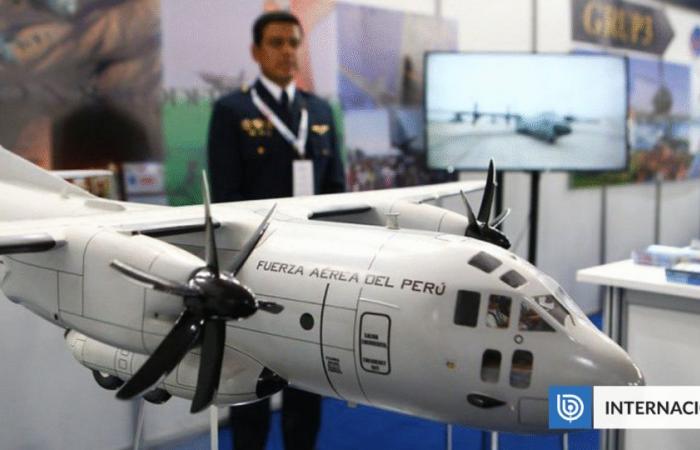
The strategic rivalry between Peru and Chile has been present for decades in different planes. In 2025, with new current military modernization processes, the comparison moves to the South American sky: which of the two countries is in better conditions to sustain its aerial power?
Biobiochile turned to the Global Firepower 2025 Ranking tool, one of the most consulted in defense issues, to establish a detailed analysis of the air fleets of both countries and their relative positioning.
According to index data, Chile is in advantage over Peru in terms of military aviation. The southern country appears with 277 aircraft (position 34 worldwide), exceeding 256 registered by Peru (position 37). This superiority is also manifested in The number of combat aircraft, where Chile adds 45 units and Peru just 15. This difference of 30 aircraft dedicated to combat places Chile’s Air Force as one of the most robust in the continent.
According to the same ranking, the Chilean Military Power Index (PWRIDX) is from 0.8361slightly better than the 0.8588 from Peru. In the global ranking, that translates into a 47th position for Chile and 49 for Peru.
Fleet comparison
An important contrast arises when remembering the 2024 military balance of the International Institute for Strategic Studies (IISS). This source records the total operating combat aircraft for each Latin American country, including only those that have supersonic capabilities.
In this list, Chile keeps the lead with 76 operational airplanes, while Peru has 60. The Chilean inventory includes 46 f-16 fighters in multiple versions, and a dozen F-5 Tiger IIIstill considered useful for defensive missions. Peru, on the other hand, operates a mixed fleet of Soviet and Western origin, composed of 19 MIG-29 Y 12 MIRAGE 2000both models with decades of service that will soon replace.
Budget and helicopters
Beyond the fighters, the comparative of Global Firepower 2025 reveals other notable differences. In the helicopter segment, Peru exceeds Chile with 111 units compared to 87, And it stands out especially for its 16 attack helicopters, while Chile does not have this type of aircraft in its current fleet.
The military budget also makes a key difference. According to Global Firepower, Chile allocates 5,032 million dollars to Defense (Global position 48), exceeding 3,420 million Peru (position 58). This difference of more than 1.6 billion dollars reflects a greater investment capacity in modern systems, training and logistics maintenance.
Fleet renewal
In this regional scenario, the Peru Air Force (FAP) has already announced an ambitious renewal plan for its combat fleet. The general commander of the FAP, Carlos Chávez Cateriano, recently confirmed the purchase of 24 new fighters in two lots of 12 units each.
“The purchase of 24 fighters will be divided into two lots of 12 units each: the first 12 will be purchased this year and the second dozen in 2026,” said the officer in statements collected by the defense.
-For the 2025 budget a game of 2,000 million dollars has already been assigned, which covers the acquisition of the first 12 aircraft, logistics support and an initial weapons package. Meanwhile, the 2026 budget includes another 1.5 billion dollars to acquire the second lot.
Cateriano also said that both aircraft blocks will be bought from a single supplier, with the aim of avoiding duplication in logistics chains.
The technical evaluation process is in its final stage. Among the models evaluated are the Rafale of the French manufacturer Dassault Aviation, the F-16C/D Block 70 produced by Lockheed Martin Aeronautics (United States), and the flu and developed by the Swedish company SAAB. The final decision has not yet been taken, but renewal is a fact.
Process in progress
General Caterian also pointed out that the decision must go through a series of official instances, including the Ministry of Defense, the Ministry of Economy and Finance, and finally be approved by the Presidency of the Republic.
“When the study is finally finished, it has to be evaluated by the Ministry of Defense, it has to go through the hands of the Ministry of Economy and Finance, and finally submit to the maximum body that would be in this case the supreme head of the Armed Forces, which is the president. That is still going to take a few weeks,” he explained to the same portal.
The FAP commander confirmed that the Comptroller General of the Republic is supervising all stages of the selection process to guarantee its transparency. As part of the schedule, manufacturers were requested that two copies of the chosen fighters can be exhibited in the celebration of the Air Force Anniversary, on July 23, 2026, at the Las Palmas Air Base, in Lima.
Transport aircraft
Along with the modernization of its combat capabilities, the Peru Air Force also evaluates the acquisition of transport aircraft. According to Biobiochile, the plan includes the purchase of 12 C-27J Spartan aircraft, although there is still no budget enabled to specify this operation.
Meanwhile, this Monday, April 28, a public tender will be opened to acquire two Boeing 737ng transport aircraft, probably of the 737-800 model. This process will be in charge of the ICAO Technical Cooperation Office (International Civil Aviation Organization), together with FAP technicians. The international entity will carry out a first technical inspection, followed by a second evaluation visit by Peruvian specialized personnel.
Initially, the operation was developed with intermediation of the Canadian Commercial Corporation (CCC). However, the Canadian corporation withdrew its sales offer, which forced to reformulate the procedure. Despite this, the budget for the purchase has not been affected, and the airplanes are expected to reach the country before July 2025.
Within the global military air fleet ranking prepared by Global Firepower, Brazil It is located in the 22nd position worldwide with 513 aircraft, which makes it the undisputed leader of the continent. Colombia appears in position 27 with 436 units, closely followed by Mexico With 433. Although below this list, both Peru and Chile remain two of the key actors in the Andean region, and their military evolution will continue to mark the pattern of strategic balances in South America.





